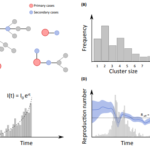Lien vers Pubmed [PMID] – 18401408
Nature 2008 Apr;452(7188):750-4
The threat posed by the highly pathogenic H5N1 influenza virus requires public health authorities to prepare for a human pandemic. Although pre-pandemic vaccines and antiviral drugs might significantly reduce illness rates, their stockpiling is too expensive to be practical for many countries. Consequently, alternative control strategies, based on non-pharmaceutical interventions, are a potentially attractive policy option. School closure is the measure most often considered. The high social and economic costs of closing schools for months make it an expensive and therefore controversial policy, and the current absence of quantitative data on the role of schools during influenza epidemics means there is little consensus on the probable effectiveness of school closure in reducing the impact of a pandemic. Here, from the joint analysis of surveillance data and holiday timing in France, we quantify the role of schools in influenza epidemics and predict the effect of school closure during a pandemic. We show that holidays lead to a 20-29% reduction in the rate at which influenza is transmitted to children, but that they have no detectable effect on the contact patterns of adults. Holidays prevent 16-18% of seasonal influenza cases (18-21% in children). By extrapolation, we find that prolonged school closure during a pandemic might reduce the cumulative number of cases by 13-17% (18-23% in children) and peak attack rates by up to 39-45% (47-52% in children). The impact of school closure would be reduced if it proved difficult to maintain low contact rates among children for a prolonged period.


